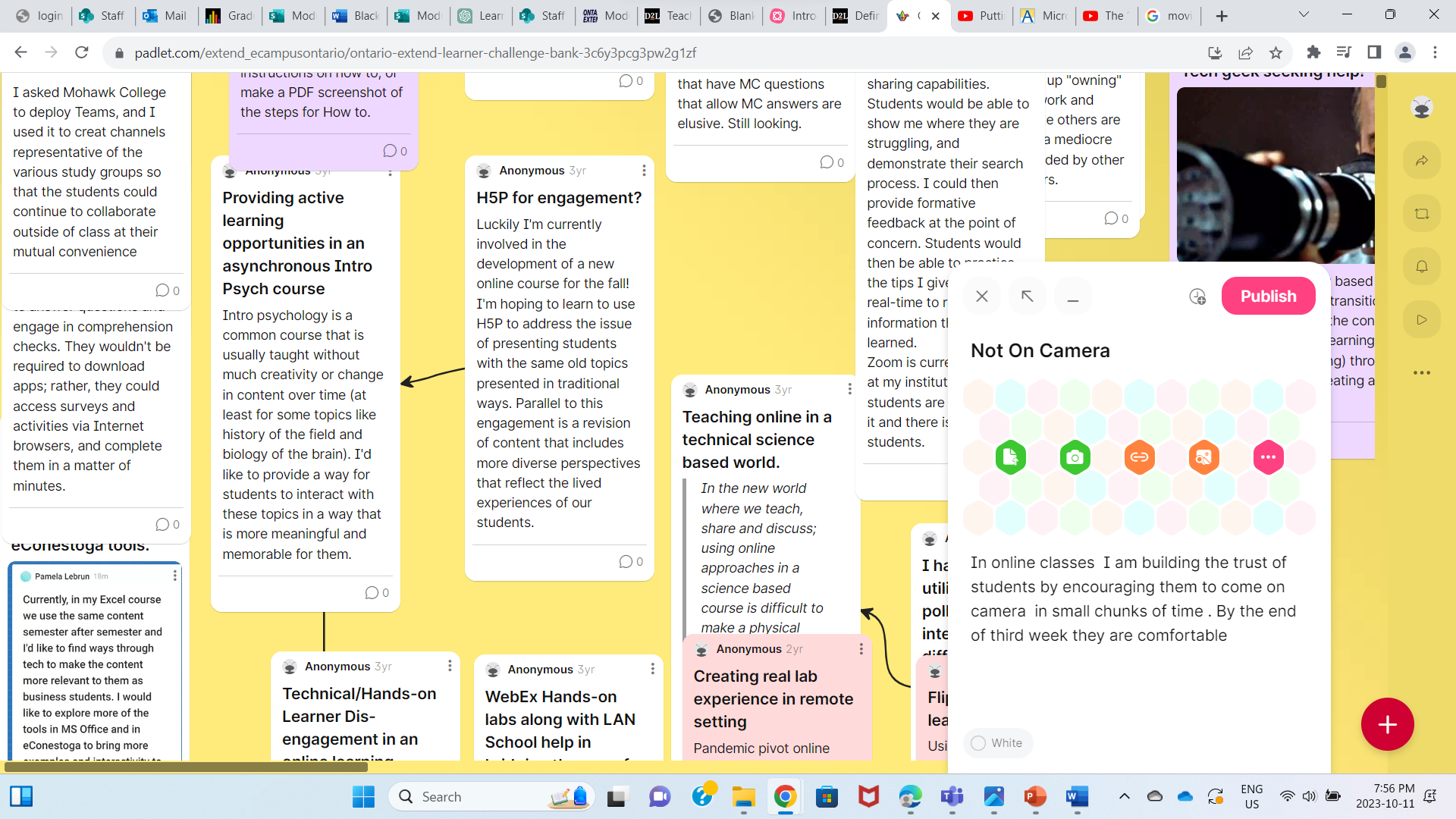Learner Challenge
Engaging students who are reluctant to come on camera during online classes can be a common challenge. Here are strategies to address this issue and promote active participation:
Create a Welcoming Environment: Foster a positive and inclusive online classroom atmosphere where all students feel comfortable and valued.
Encourage a sense of community and belonging, even in the virtual environment.
Flexible Camera Policy: Be understanding of students’ reasons for not using cameras. Some may have privacy concerns or technical limitations. Allow students the choice of whether to appear on camera.
Set Expectations: Clearly communicate your expectations regarding student engagement and participation in your syllabus or course introduction.
Emphasize that active participation, even without a camera, is encouraged and essential for their learning.
Varied Participation Methods: Provide a range of participation options. Students can participate through the chat, audio, or written comments in discussion forums.
Use online polls or surveys to engage students without requiring them to be on camera.
Encourage Regular Interactions: Foster interaction through breakout rooms, group projects, or collaborative activities that don’t depend on camera usage.
Create opportunities for students to work together in small groups, promoting peer-to-peer interaction.
Get to Know Your Students: Connect with your students on an individual level. Encourage them to share their preferences and concerns privately through email or course messaging.
Offer Technical Support: Ensure that students have the technical support they need to resolve any camera or connectivity issues.
Share resources or offer support sessions to troubleshoot common problems.
Use Engaging Content: Develop dynamic and interactive content to maintain student interest and motivation during class. Include multimedia, real-world examples, and case studies.
Encourage Self-Paced Learning: Provide recorded lectures or class materials for students to review at their own pace. This allows those uncomfortable with being on camera to learn on their terms.
Regular Feedback: Request regular feedback from students regarding their online learning experiences. Adjust your teaching methods based on their input.
Celebrate Diversity: Emphasize the value of diverse perspectives and backgrounds. Encourage students to share their unique viewpoints even without appearing on camera.
Lead by Example: Show students that you are flexible and understanding by occasionally turning off your camera during class. This demonstrates empathy and sets a positive example.
One-on-One Discussions: Offer one-on-one virtual meetings with students who are reluctant to come on camera. This personal touch can help build rapport and make students feel more at ease.
Remember that the key is to create a supportive and inclusive online learning environment. Flexibility, understanding, and a variety of engagement methods will go a long way in addressing the challenge of students not coming on camera in online classes.
TweetExample for "Learner Challenge":
https://bank.ecampusontario.ca/wp-content/uploads/2023/10/Screenshot-NOT-on-Camera-.png


Leave a Reply